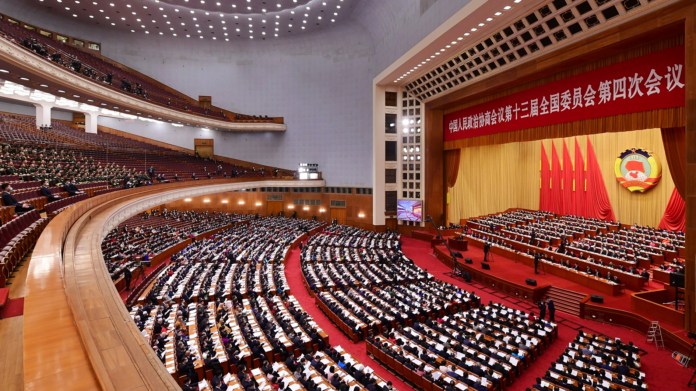BEIJING: This year, China is hosting its Two Sessions with a renewed sense of purpose and determination, aiming to embrace the winds of change.
These important national events pave the way for China’s political, economic, and social direction that has far-reaching implications at the regional and global scale.
In 2024, the sessions take on added significance as they unfold in a period marked by China’s quest for a transformative shift toward high-quality development.
Central to this year’s deliberations is the concept of “new quality productive forces,” a term that echoes the country’s strategic vision for a future rooted in technological innovation and efficiency, according to an article carried by Gwadar Pro on Thursday.
The term “new quality productive forces” is associated with China’s push towards technological innovation, digital economy, green development, and high-end manufacturing as part of its broader strategy to transition from high-speed to high-quality growth, aligning with China’s 14th Five-Year Plan (2021-2025) and long-term goals for 2035. The idea aims to steer the country away from its traditional growth model towards a future defined by advanced productivity and sustainable development.
The emphasis on new quality productive forces during the ongoing sessions marks a pivotal moment in China’s trajectory toward becoming a great modern socialist country.
Innovation, as underscored by Chinese leadership during the deliberations of the Two Sessions and the Central Economic Work Conference, is at the heart of the concept of new quality productive forces.
This innovation-centric approach is not merely a pivot but a profound transformation that seeks to liberate productivity from the confines of traditional growth pathways.
It’s about fostering a paradigm where high technology, efficiency, and quality are not just aspirations but the bedrock of economic activities. This transformative vision resonates with the country’s broader goals outlined in the 14th Five-Year Plan, aiming for a quantum leap in the share of strategic emerging industries such as new energy, high-end equipment, and biotechnology in its GDP.
Emphasizing new quality productive forces is a strategic response to the new emerging challenges that are posed by the decoupling efforts by the West.
The aim is meant to bolster economic growth through modernization and self-reliance to face external pressure and trade tensions. Through the focused attention on advancement in new technologies and emerging industries, the strategy is to secure China’s place as a “first-mover advantage” in the global trade and economic landscape.
By following this clear path and aim, China not only will be able to navigate the complexities of global tech, trade and economic fragmentation but also will play pivotal role in supporting other developing countries.
Internationally, the development of new quality productive forces in China has implications far beyond its borders. As the country moves up the value chain, it reshapes global trade dynamics, challenges existing geopolitical hierarchies, and sets new standards for innovation and sustainability.
This shift underscores the interconnectedness of the global economy and the need for international collaboration in addressing common challenges.
At a time when the global economy faces unprecedented challenges, from geopolitical tensions to environmental crises, China’s pivot towards new quality productive forces offers a blueprint for sustainable growth that other nations might look to for inspiration.
The focus on new quality productive forces also signals China’s commitment to playing a more active role in promoting global growth. By injecting new impetus into the world economy through its emphasis on innovation and high-quality development, China is contributing to a more dynamic and resilient global economic landscape.
This contribution is particularly crucial at a time when the world is grappling with the dual challenges of recovery from the pandemic and transitioning to a more sustainable economic model.
For countries like Pakistan, China’s approach and ideals of the new quality productive forces offer valuable lessons. The emphasis on technology and innovation as drivers of economic growth is a reminder of the need for developing countries to diversify their economies and invest in the sectors that will define the future global economy.
However, it also highlights the importance of tailoring development strategies to local conditions, leveraging existing strengths while navigating the complexities of technological adoption and integration.
The Two Sessions in China stand as a testament to the country’s ambitions and its strategic vision for the future. The emphasis on new quality productive forces reflects a deep understanding of the challenges and opportunities that lie ahead, not just for China but for the global economy.
The journey towards new quality productive forces is not just China’s journey; it is a global endeavor, one that calls for collaboration, innovation, and a shared commitment to a future that is prosperous, sustainable, and inclusive.























